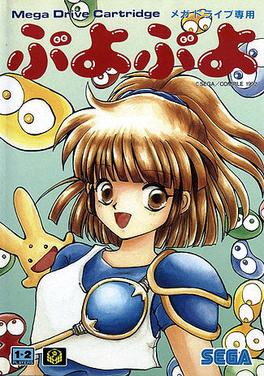
Puyo Puyo (ぷよぷよ) is a puzzle video game released in 1991 by Compile for the MSX2. Since its creation, it uses characters from Madō Monogatari. It was created by Masamitsu "Moo" Niitani, the founder of Compile, who was inspired by certain elements from the Tetris and Dr. Mario series of games.

Dr. Robotnik's Mean Bean Machine is a falling block puzzle game developed by Compile and published by Sega. It was released for the Sega Genesis / Mega Drive in North America and Europe in November 1993, and ported to the Game Gear in 1993 and Master System in 1994.

Puyo Pop Fever is a 2003 puzzle video game developed by Sonic Team & Digi-mix and published by Sega. It is the fifth main installment in the Puyo Puyo puzzle game series and the second Puyo Puyo game to be programmed by Sonic Team after Puyo Pop. This was the start of the what can be considered a reboot of the Puyo Puyo franchise, with this entry's plot revolving around Professor Accord losing her flying cane. Sega, which acquired the series' rights from Compile in 1998, published all the Japanese releases of the game, and also published the arcade and GameCube versions internationally. The game was scarcely released internationally, and certain versions were released by other publishers in those areas. Only the arcade, GameCube, and Nintendo DS versions were released in North America. Europe received all three versions plus the PlayStation 2, Xbox, Game Boy Advance, and PlayStation Portable versions. The Dreamcast version, released exclusively in Japan, was the last Dreamcast game developed by Sonic Team, the last first-party title released on the platform, as well as the final first-party title by Sega. The Dreamcast version is the only console version to use sprites in place of 3D models.

Super Puzzle Fighter II Turbo, released in Japan as Super Puzzle Fighter II X, is a tile-matching puzzle video game released in 1996 for the CP System II (CPS2) arcade board, by Capcom and its Capcom Coin-Op division. The game's title is a play on Super Street Fighter II Turbo, as there were no other Puzzle Fighter games at the time, and the game includes music and interface elements spoofing the Street Fighter Alpha and Darkstalkers games. It was a response to Sega's Puyo Puyo 2 that had been sweeping the Japanese arcade scene.

Bonanza Bros. is a 3D-style, 2D side-scrolling stealth action game developed and released by Sega in 1990. It is one of the earliest arcade games powered by the Sega System 24 arcade system board. It was ported to various home systems, including the Mega Drive/Genesis, Master System, PC-Engine/TurboGrafx-CD, and several home computers.
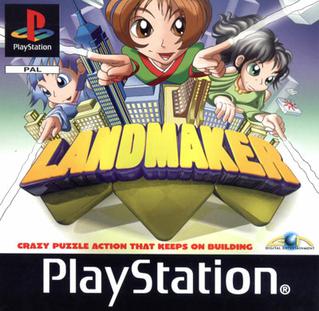
Landmaker (ランドメーカー) is an isometric arcade puzzle video game developed and released by Taito in 1998. It is a versus action puzzle game similar in appearance to Taito's own Puzzle Bobble, though it plays more like Puyo Puyo or Baku Baku Animal. The arcade version was released only in Japan, though a prototype for a worldwide release exists.

Puzzle Bobble 2 is a tile-matching video game by Taito. The first sequel to Puzzle Bobble, it is also known in Europe and North America as Bust-A-Move Again for arcades and Bust-A-Move 2: Arcade Edition for home consoles. Released into the arcades in 1995, home conversions followed for the PlayStation, Sega Saturn, Nintendo 64, and Windows platforms. The game was included in Taito Legends 2, but the US arcade version was included on the US PS2 version instead. Further ports for the Nintendo Switch, PlayStation 4, and Xbox One were released by City Connection alongside Puzzle Bobble 3 in February 2023.
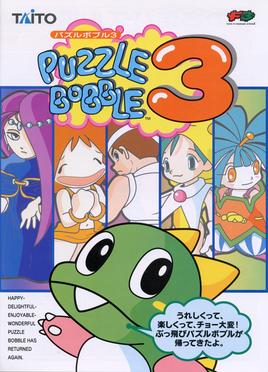
Puzzle Bobble 3 is an action puzzle video game developed by Taito. The second sequel to Puzzle Bobble, it was released for arcades in September 1996 and later ported to the Sega Saturn, PlayStation, Game Boy, Nintendo 64 and Microsoft Windows. Like its predecessors, the player is tasked with shooting balls at groups of balls, creating groups of three or more, which are then removed from play. Further ports for the Nintendo Switch, PlayStation 4 and Xbox One were released in February 2023 by City Connection alongside Puzzle Bobble 2.
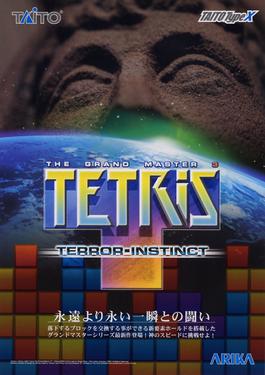
Tetris: The Grand Master is a series of puzzle arcade video games created by Arika.

Puyo Puyo 2 is the second installment in the Puyo Puyo series and the sequel to Puyo Puyo, made in 1994 by Compile. Compile put more thought into this game after its predecessor became successful, but never knew how much of a turnaround the game would bring.

Money Puzzle Exchanger is a puzzle game created on January 17, 1997 by Japanese video game developer Face for the Neo Geo MVS arcade system. Athena Co. Ltd. ported it to the Game Boy on August 29, 1997, and the PlayStation on November 5, 1998. The Japanese PlayStation version was made available by MonkeyPaw Games on the PlayStation Network's import store on November 16, 2010. It was later re-released as part of the Arcade Archives Neo Geo series for PlayStation 4, Xbox One and Nintendo Switch on June 28, 2018.
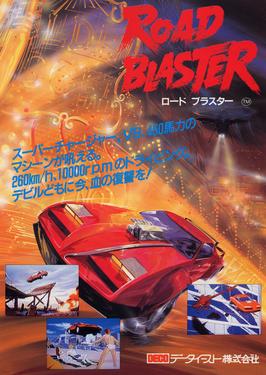
Road Blaster (ロードブラスター) is an interactive movie video game developed by Data East featuring animation by Toei Animation, originally released exclusively in Japan as a laserdisc-based arcade game in 1985. The player assumes the role of a vigilante who must avenge the death of his wife by pursuing the biker gang responsible for her death in a modified sports car. The game would later be ported to a variety of home formats such as the MSX and Sharp X1, Sega CD, LaserActive, PlayStation and Sega Saturn. The Sega CD and Mega-LD versions were released outside of Japan under titles of Road Avenger and Road Prosecutor respectively.

Puyo Puyo! 15th Anniversary is a puzzle video game of the Puyo Puyo series, developed by Sonic Team and published by Sega for the Nintendo DS in 2006, as well as PlayStation 2, PlayStation Portable, and Wii in 2007. It has not been released outside of Japan for any consoles. This is the first Puyo Puyo game to be released on the Wii console.

Octomania is a puzzle game by Compile Heart and Idea Factory for the Wii. It is an enhanced version of an arcade title released in 2006 running on Sega NAOMI hardware. Hyper-Devbox Japan helped port the game to the Wii by creating libraries so that the programmers could easily just recompile the source code of the arcade game, and then add new features. The game was published in North America by Conspiracy Entertainment. The game was supervised by Puyo Puyo creator Moo Niitani.
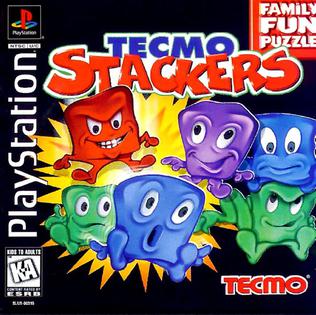
Tecmo Stackers, known as Dero~n Dero Dero (でろ~んでろでろ) in Japan, is a puzzle video game released first in 1995 by Tecmo to arcades and ported to both the Sony PlayStation and SEGA Saturn. The gameplay is similar to Puyo Puyo.
Puyo Puyo (ぷよぷよ), previously known as Puyo Pop outside Japan, is a series of tile-matching video games created by Compile. Sega has owned the franchise since 1998, with games after 2001 being developed by Sonic Team. Puyo Puyo was created as a spin-off franchise to Madō Monogatari, a series of first-person dungeon crawler role-playing games by Compile from which the Puyo Puyo characters originated. The series has sold over 9 million copies, including the Madō Monogatari games.

Hatsune Miku: Project DIVA is a series of rhythm games created by Sega and Crypton Future Media. The series currently consists of 6 main titles, released on various PlayStation consoles, the Nintendo Switch, Microsoft Windows, and in arcades, the 2 Project Mirai games for the Nintendo 3DS, and 4 spin-offs for mobile and VR platforms. The series primarily makes use of Vocaloids, a series of singing synthesizer software developed by the Yamaha Corporation, and the songs created using these Vocaloids, most notably the virtual-diva Vocaloid Hatsune Miku.

Puyo Puyo!! 20th Anniversary is a puzzle game developed by Sonic Team and published by Sega. The game honored the twentieth year of the Puyo Puyo series, and was first released for the Nintendo DS in July 2011, and later for Wii, Nintendo 3DS, and PlayStation Portable in December.

Puyo Puyo Tetris is a 2014 puzzle video game developed by Sonic Team and published by Sega. The game is a crossover between the Puyo Puyo series and the Tetris franchise, and features various gameplay modes incorporating both aspects. The game includes characters modeled and named after the seven Tetrominos, which are different puzzle pieces each made of four blocks.

Cosmo Gang the Puzzle is a 1992 falling block puzzle arcade video game developed and published by Namco worldwide. The third game in its Cosmo Gang series, succeeding that year's Cosmo Gang the Video, players stack groups of blocks and aliens known as Jammers in a vertical-oriented well. The objective is to clear as many objects on the screen before they reach the top of the screen. Blocks are cleared by aligning them into complete horizontal rows, while Jammers are cleared by defeating them with blue-colored spheres.




















